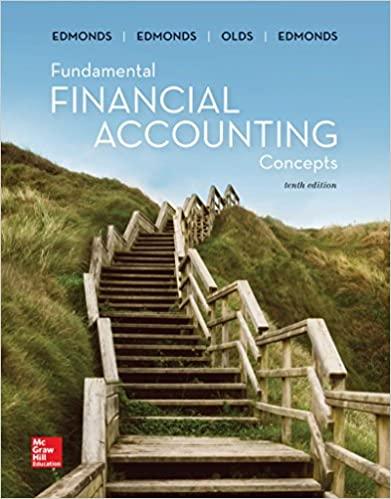Question
1. During a remote session a hedging example involving the future price of apples was considered. This was used in considering the Risk Assessment Process
1. During a remote session a hedging example involving the future price of apples was considered. This was used in considering the Risk Assessment Process of the COSO Internal Control Framework. Consider the following:
A speculator at an investment bank enters into an enforceable contract to sell 100,000 bushels of apples in October for $30 a bushel. The actual price of a bushel of apples in October is $45.
I. For the speculator to make a profit, the price of apples in October should go up, i.e. more than $30 per bushel.
II. As stated above the profit or loss for the speculator Would be $1,500,000.
a. I is true; II is true.
b. I is true; II is false.
c. I is false; II is true.
d. I is false; II is false.
2. Tracing shipping documents to sales invoices to see if shipped items are being billed, is what type of evidence?
a. Analytical review
b. Confirmation
c. Inspection of documents
d. Recalculation
e. None of the above
3. 1 In observing inventory in a company's warehouse, an auditor sees five Orcs.
I. This pertains to the assertion Existence
II. This pertains to the assertion Rights and Obligations
a. Statement I is true; Statement II is true.
b. Statement I is true; Statement II is false.
c. Statement I is false; Statement II is true.
d. Statement I is false; Statement II is false.
4. Auditors often follow a "cycle" approach to the gathering of evidence. Of the following accounts, which typically would NOT be part of the sales cycle?
a. Accounts Receivable
b. Allowance for doubtful accounts
c. Cost of goods sold d. Sales returns and allowances
e. All would be part of the Sales Cycle.
5. The assertion Rights and Obligations involves
a. Existence.
b. Overstatement.
c. Professional Skepticism.
d. Understatement.
6. "All purchases that took place, were recorded." involves which management assertion?
a. Occurrence
b. Classification
c. Completeness
d. Accuracy
7. The notion of "Audit Philosophy" relates to lowering the cost of the audit. Consider the following statements:
I . Lowering the cost of the audit refers to Audit Effectiveness.
II. By testing liabilities directly [i.e. get audit evidence about the liability account] for understatement, one also obtains information about completeness of an expense account.
a. I is true; II is true.
b. I is true; II is false.
c. I is false; II is true.
d. I is false; II is false.
8. To be appropriate, evidence should be relevant and reliable. Under which of the situations would evidence be considered to be LESS rather than MORE reliable:
a. Evidence is obtained from accounting records developed under a properly designed system of internal controls.
b. Evidence is derived from Objective sources rather than subjective (i.e. judgmental) sources.
c. The auditor was only told the information by the controller.
d. The auditor sending accounts receivable confirmations to customers of the company being audited, rather than scan the accounts receivable subsidiary ledger.
9. In class, we discussed the notion of an audit philosophy of tests of accounts for overstatement and understatement to gain audit efficiencies. Consider the following statements:
I. Testing Sales revenue for UNDERstatement, conceptually, also tests Accounts Receivable for OVERstatement.
II. Assume that company management made the following journal entry:
Capital Asset (i.e. Building) XX
Repairs and Maintenance Expense XX
If the auditor tests the asset account for overstatement, then conceptually: Expenses are also tested for understatement.
a. I is true; II is true.
b. I is true; II is false.
c. I is false; II is true.
d. I is false; II is false.
10. An auditor uses analytical procedures, rather than a detail test, in testing interest expense. This is referred to as a:
a. Rationalization test.
b. Reasonableness test.
c. Realizable test.
d. Redundant test.
Step by Step Solution
There are 3 Steps involved in it
Step: 1

Get Instant Access to Expert-Tailored Solutions
See step-by-step solutions with expert insights and AI powered tools for academic success
Step: 2

Step: 3

Ace Your Homework with AI
Get the answers you need in no time with our AI-driven, step-by-step assistance
Get Started


